Showing Spotlights 793 - 800 of 2783 in category All (newest first):
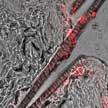 Cutaneous fungal infections involving the skin, hair, or nails affect an estimated 25% of the world's population, and accounts for millions of outpatient visits. Currently, deep fungal infection require systemic therapy, which can pose a range of side effects or drug interactions depending on the clinical scenario. Investigators now have demonstrated the antifungal activity of nitric oxide generating nanoparticles against dermatophytes well known to cause invasive cutaneous infections.
Cutaneous fungal infections involving the skin, hair, or nails affect an estimated 25% of the world's population, and accounts for millions of outpatient visits. Currently, deep fungal infection require systemic therapy, which can pose a range of side effects or drug interactions depending on the clinical scenario. Investigators now have demonstrated the antifungal activity of nitric oxide generating nanoparticles against dermatophytes well known to cause invasive cutaneous infections.
Jul 19th, 2017
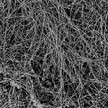 Turning atmospheric carbon dioxide (CO2) into valuable products seems like a great idea to help remove this greenhouse gas to mitigate climate change. Using a process of molten carbonate electrolytic transformation of CO2 to carbon nanotubes, researchers have now demonstrated 'carbon nanotube wool'. These are the first carbon nanotubes that can be directly woven into a cloth as they are of macroscopic length (over 1mm) and are cheap to produce. The sole reactant to produce the carbon nanotube wools is carbon dioxide. This transforms CO2 from a pollutant into a useful, valuable resource.
Turning atmospheric carbon dioxide (CO2) into valuable products seems like a great idea to help remove this greenhouse gas to mitigate climate change. Using a process of molten carbonate electrolytic transformation of CO2 to carbon nanotubes, researchers have now demonstrated 'carbon nanotube wool'. These are the first carbon nanotubes that can be directly woven into a cloth as they are of macroscopic length (over 1mm) and are cheap to produce. The sole reactant to produce the carbon nanotube wools is carbon dioxide. This transforms CO2 from a pollutant into a useful, valuable resource.
Jul 18th, 2017
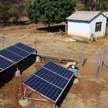 In addition to economic, social and political measures, new technologies can provide tools for poverty reduction. Many people in developing countries don't just lack money. Especially in remote regions, many also lack access to electricity, clean drinking water and basic sanitation, cooking facilities, healthcare, adequate housing, etc. The innovative solutions for developing countries supported by the use of nanotechnologies mainly target five areas: water; medicine; agriculture; food; and energy.
In addition to economic, social and political measures, new technologies can provide tools for poverty reduction. Many people in developing countries don't just lack money. Especially in remote regions, many also lack access to electricity, clean drinking water and basic sanitation, cooking facilities, healthcare, adequate housing, etc. The innovative solutions for developing countries supported by the use of nanotechnologies mainly target five areas: water; medicine; agriculture; food; and energy.
Jul 13th, 2017
 New work demonstrates that one of the most important security primitives, i.e. a true random number generator (TRNG), can be realized within the rigorous constraints required for future Internet-of-Things electronics. The solution-processability of semiconducting single-walled carbon nanotubes allows to meet these strict constraints by simultaneously enabling small-scale, low cost fabrication of low-power, ultra-thin, printable, and mechanically flexible security devices. This presents a significant milestone in enabling higher level cryptographic solutions using scalable solution processing.
New work demonstrates that one of the most important security primitives, i.e. a true random number generator (TRNG), can be realized within the rigorous constraints required for future Internet-of-Things electronics. The solution-processability of semiconducting single-walled carbon nanotubes allows to meet these strict constraints by simultaneously enabling small-scale, low cost fabrication of low-power, ultra-thin, printable, and mechanically flexible security devices. This presents a significant milestone in enabling higher level cryptographic solutions using scalable solution processing.
Jul 12th, 2017
 In conventional liquid crystal displays (LCD), the liquid crystal (LC) material is contained in conventional LC cells, where the polyimide layers are used to align the LC homogeneously in the cell, and the transmissive indium tin oxide (ITO) electrodes are used to apply the electric field to reorient the LC along the field. Now, researchers have experimentally demonstrated that monolayer graphene films on the two glass substrates can function concurrently as the LC alignment layers and the transparent electrodes to fabricate an LC cell, without using the conventional polyimide and ITO substrates.
In conventional liquid crystal displays (LCD), the liquid crystal (LC) material is contained in conventional LC cells, where the polyimide layers are used to align the LC homogeneously in the cell, and the transmissive indium tin oxide (ITO) electrodes are used to apply the electric field to reorient the LC along the field. Now, researchers have experimentally demonstrated that monolayer graphene films on the two glass substrates can function concurrently as the LC alignment layers and the transparent electrodes to fabricate an LC cell, without using the conventional polyimide and ITO substrates.
Jul 11th, 2017
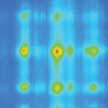 Multi-modal lasers can emit at different wavelengths simultaneously and are important for applications ranging from multiplexed signal processing to multi-color biomedical imaging. To achieve multi-wavelength capabilities, however, the single-color lasers need to be operated as an array of lasers, which dramatically increases the unit cost and precludes their integration with compact photonic devices. Researchers now have demonstrated that multi-modal lasing with control over the different colors can be achieved in a single device.
Multi-modal lasers can emit at different wavelengths simultaneously and are important for applications ranging from multiplexed signal processing to multi-color biomedical imaging. To achieve multi-wavelength capabilities, however, the single-color lasers need to be operated as an array of lasers, which dramatically increases the unit cost and precludes their integration with compact photonic devices. Researchers now have demonstrated that multi-modal lasing with control over the different colors can be achieved in a single device.
Jul 10th, 2017
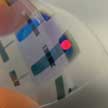 Flexible sensors hold great promise for various innovative applications in fields such as medicine, healthcare, environment, and biology. Over the past decade, the development of flexible and stretchable sensors for various functions has been accelerated by rapid advances in materials, processing methods, and platforms. For practical applications, new expectations are arising in the pursuit of highly economical, multifunctional, biocompatible flexible sensors.
Flexible sensors hold great promise for various innovative applications in fields such as medicine, healthcare, environment, and biology. Over the past decade, the development of flexible and stretchable sensors for various functions has been accelerated by rapid advances in materials, processing methods, and platforms. For practical applications, new expectations are arising in the pursuit of highly economical, multifunctional, biocompatible flexible sensors.
Jul 7th, 2017
 With a focus on using eco-friendly materials such as fabrics worn in daily life (nylon, jeans, cotton, etc.), researchers have developed and demonstrated an innovative product for scavenging biomechanical energy. The team's Smart Mobile Pouch Triboelectric Nanogenerator (SMP-TENG) can generate electricity from lateral sliding and vertical contact and separation with freestanding fabrics; it also can serve as a self-powered emergency flashlight and self-powered pedometer.
With a focus on using eco-friendly materials such as fabrics worn in daily life (nylon, jeans, cotton, etc.), researchers have developed and demonstrated an innovative product for scavenging biomechanical energy. The team's Smart Mobile Pouch Triboelectric Nanogenerator (SMP-TENG) can generate electricity from lateral sliding and vertical contact and separation with freestanding fabrics; it also can serve as a self-powered emergency flashlight and self-powered pedometer.
Jul 6th, 2017
 Cutaneous fungal infections involving the skin, hair, or nails affect an estimated 25% of the world's population, and accounts for millions of outpatient visits. Currently, deep fungal infection require systemic therapy, which can pose a range of side effects or drug interactions depending on the clinical scenario. Investigators now have demonstrated the antifungal activity of nitric oxide generating nanoparticles against dermatophytes well known to cause invasive cutaneous infections.
Cutaneous fungal infections involving the skin, hair, or nails affect an estimated 25% of the world's population, and accounts for millions of outpatient visits. Currently, deep fungal infection require systemic therapy, which can pose a range of side effects or drug interactions depending on the clinical scenario. Investigators now have demonstrated the antifungal activity of nitric oxide generating nanoparticles against dermatophytes well known to cause invasive cutaneous infections.

 Subscribe to our Nanotechnology Spotlight feed
Subscribe to our Nanotechnology Spotlight feed





